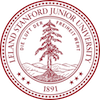The Theoretical Minimum

A number of years ago I became aware of the large number of physics enthusiasts out there who have no venue to learn modern physics and cosmology. Fat advanced textbooks are not suitable to people who have no teacher to ask questions of, and the popular literature does not go deeply enough to satisfy these curious people. So I started a series of courses on modern physics at Stanford University where I am a professor of physics. The courses are specifically aimed at people who know, or once knew, a bit of algebra and calculus, but are more or less beginners.
The term Theoretical Minimum originated with renowned Russian physicist Lev Landau. From Wikipedia:
Landau developed a comprehensive exam called the "Theoretical Minimum" which students were expected to pass before admission to the school. The exam covered all aspects of theoretical physics, and between 1934 and 1961 only 43 candidates passed.
(Stanford oval image © 2011 King of Hearts / Wikimedia Commons / CC BY-SA 3. The original image is available here.)
Sponsors
These lectures are presented by the following organizations:
Stanford Institute for Theoretical Physics
The Stanford Institute for Theoretical Physics ("SITP") is home to a community of faculty, graduate students, postdoctoral fellows, and visiting scientists who work together to unlock the deepest secrets of the universe. This collaborative environment has made Stanford a leader in theoretical physics.
SITP is a place where veteran scientists and rising stars conduct bold “thought experiments” in high energy and condensed matter physics. Unlike experimental physicists who test ideas in conventional labs, scientists at SITP test theories on blackboards. Their experimental procedure is the free exchange of ideas.
At the institute, academic hierarchy takes a backseat to collaboration. An open-door environment encourages spontaneous discussion and productive debate. “This makes science advance faster,” says Leonard Susskind, the Felix Bloch Professor and the Director of SITP. “It’s a ‘roll up your sleeves and attack the blackboard’ kind of place. It’s never dull. There is no place quite like it.”
The mission of Stanford Continuing Studies is to share the rich educational resources of Stanford University with neighboring adult students, to nurture a vibrant learning community, to nourish the life of the mind, and to promote the pleasures of intellectual exploration and exchange. Continuing Studies offers a broad range of courses in Liberal Arts & Sciences, Creative Writing, and Professional & Personal Development.
Continuing Studies offers approximately 400 courses annually, attracting more than 11,000 students. Courses are primarily taught by Stanford instructors, meet on campus in the evening or on a Saturday, and are open to all interested adults.
Stanford on iTunes U
Stanford on iTunes U is an archive of audio and video content from schools, departments, and programs across the university on Apple's popular iTunes platform.
Stanford on iTunes U is sponsored by the Office of University Communications.
Stanford University
Located between San Francisco and San Jose in the heart of Silicon Valley, Stanford University is recognized as one of the world's leading research and teaching institutions.
Leland and Jane Stanford founded the University to "promote the public welfare by exercising an influence on behalf of humanity and civilization." Stanford opened its doors in 1891, and more than a century later, it remains dedicated to finding solutions to the great challenges of the day and to preparing our students for leadership in today's complex world.
Acknowledgements
- Thanks to the following students of Professor Susskind's Theoretical Minimum courses for contributing writing and editorial assistance to this website: Sanjay Gidwani, Clinton Lewis, Kenneth McElvain, Jacques Rutschmann, Kevin Wells
- Website design and development by Ideograph
- Some images courtesy of KIPAC at Stanford University
- Some written content and images courtesy of Wikipedia


